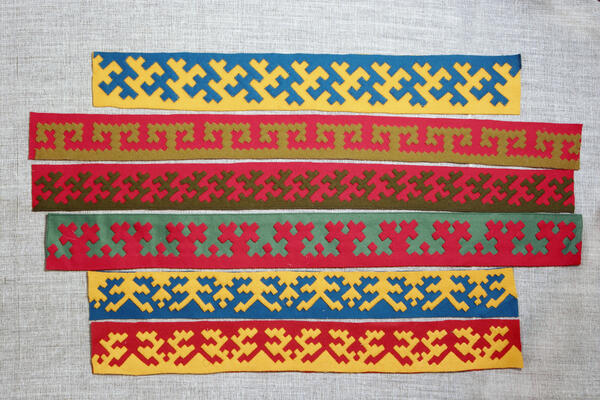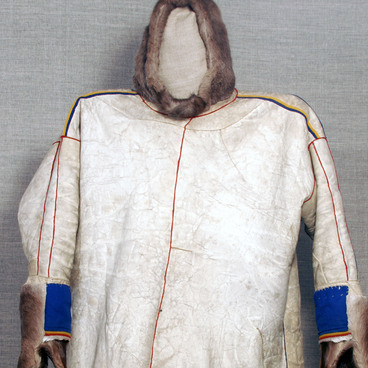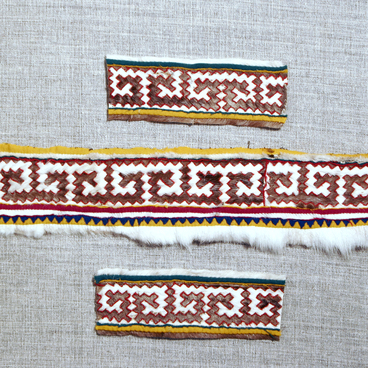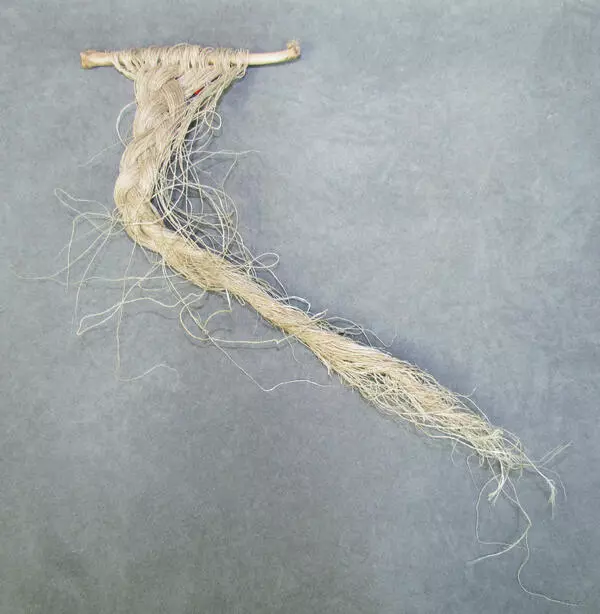Traditional mosaic ornaments the NEnets people use for decoration of their clothing reflect clearly this people’s culture, outlook and lifestyle. Embroidery is a very complicated and demanding task that requires lots of time, patience and experience. The most skillful dressmakers don’t draft the pattern but cut the ornamental line with a knife straight on the cloth.
The feature of the pattern is that both parts are equal in shape and mirror one another, making a mosaic. The rhythmic repetition of the elements stands for the cyclical nature of life and a human. Aesthetics is achieved through alternating strips of cloth of different colors. Additionally, they use applique, sewing a contrasting ornament over the cloth of a basic color with fine whip stitches. Quality and difficulty of embroidery define the skill of a dressmaker. And it is quite common that before he chooses a bride, a man takes into account her sewing skills but not her looks, because it will be the woman who will provide the whole family with clothing and footwear. The NEnets women process reindeer skins, make durable thread of animals’ tendons and sew by themselves. There are many different variations of decorating clothes with strips of fur and cloth, beads, metal pendants and ornaments.
You can tell by the ornament the head of the family’s occupation: whether he is a reindeer herder, a fisher or a hunter. A herder’s wife usually applies reindeer motifs like “reindeer antlers”, “bull horns”, “vazhenka (young female reindeer) antlers”; a hunter’s wife takes a hunting theme with ‘wood-grouse tail’, ‘squirrel’ and ‘hare ears’ patterns; a fisher’s wife goes with “fish-drying stands” and “hooks”. Families with many children apply simpler ornaments and they do it less often.
The fragments of a cloth ornament displayed in the ethnographical collection of Gubkinsky Museum of the Development of the North are provided by a Forest Nenets Fedosiya Vyllo, a Muravlenko town resident.
The feature of the pattern is that both parts are equal in shape and mirror one another, making a mosaic. The rhythmic repetition of the elements stands for the cyclical nature of life and a human. Aesthetics is achieved through alternating strips of cloth of different colors. Additionally, they use applique, sewing a contrasting ornament over the cloth of a basic color with fine whip stitches. Quality and difficulty of embroidery define the skill of a dressmaker. And it is quite common that before he chooses a bride, a man takes into account her sewing skills but not her looks, because it will be the woman who will provide the whole family with clothing and footwear. The NEnets women process reindeer skins, make durable thread of animals’ tendons and sew by themselves. There are many different variations of decorating clothes with strips of fur and cloth, beads, metal pendants and ornaments.
You can tell by the ornament the head of the family’s occupation: whether he is a reindeer herder, a fisher or a hunter. A herder’s wife usually applies reindeer motifs like “reindeer antlers”, “bull horns”, “vazhenka (young female reindeer) antlers”; a hunter’s wife takes a hunting theme with ‘wood-grouse tail’, ‘squirrel’ and ‘hare ears’ patterns; a fisher’s wife goes with “fish-drying stands” and “hooks”. Families with many children apply simpler ornaments and they do it less often.
The fragments of a cloth ornament displayed in the ethnographical collection of Gubkinsky Museum of the Development of the North are provided by a Forest Nenets Fedosiya Vyllo, a Muravlenko town resident.





